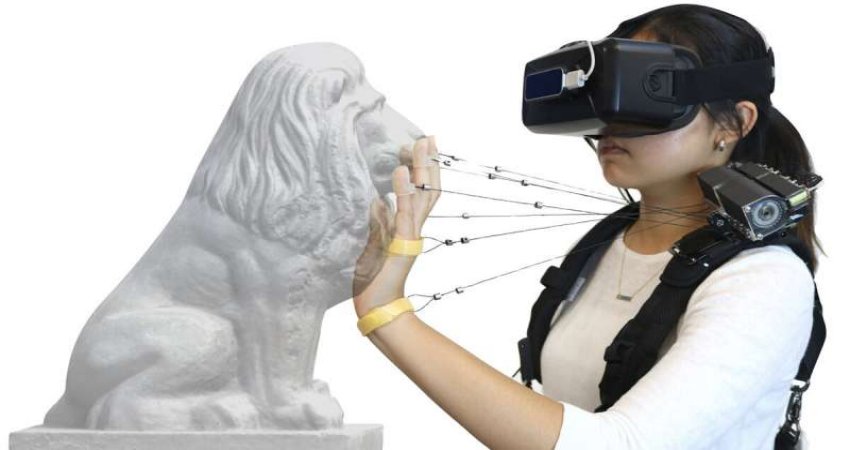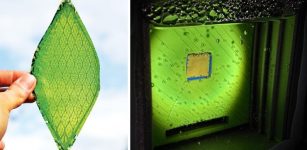New Virtual Reality Device Gives You A Chance To Touch And Feel Objects
Don Wood – MessageToEagle.com – We are entering the world of virtually faster and faster. Using cutting-edge technology we can embark on a virtual journey and explore places we could never visit in real life. Virtual reality is here to stay, but so far the technology has had some limitations.
Today’s virtual reality systems can create immersive visual experiences, but it doesn’t often enable users to feel anything, particularly walls, appliances, and furniture. This can change now and we may be able to feel objects.

A new device developed at Carnegie Mellon University uses multiple strings attached to the hand and fingers to simulate the feel of obstacles and heavy objects in virtual reality environments. Credit: Carnegie Mellon University
A new device developed at Carnegie Mellon University, however, uses multiple strings attached to the hand and fingers to simulate the feel of obstacles and heavy objects.
By locking the strings when the user’s hand is near a virtual wall, for instance, the device simulates the sense of touching the wall. Similarly, the string mechanism enables people to feel the contours of a virtual sculpture, sense resistance when they push on a piece of furniture or even give a high five to a virtual character.
See also:
AuraRing – Tracks Your Location And Turns Your Hand Into A Virtual Reality Avatar
Meet Neon – A Virtual Being That Looks And Acts Like A Real Human
“Elements such as walls, furniture and virtual characters are key to building immersive virtual worlds, and yet contemporary VR systems do little more than vibrate hand controllers,” said Chris Harrison, assistant professor in CMU’s Human-Computer Interaction Institute (HCII).
“I think the experience creates surprises, such as when you interact with a railing and can wrap your fingers around it,” Fang said. “It’s also fun to explore the feel of irregular objects, such as a statue.”
The researchers experimented with a number of different strings and string placements, eventually concluding that attaching one string to each fingertip, one to the palm and one to the wrist provided the best experience.
A Leap Motion sensor, which tracks hand and finger motions, is attached to the VR headset. When it senses that a user’s hand is in proximity to a virtual wall or other obstacle, the ratchets are engaged in a sequence suited to those virtual objects. The latches disengage when the person withdraws their hand.
Fang said the system would be suitable for VR games and experiences that involve interacting with physical obstacles and objects, such a maze.
It might also be used for visits to virtual museums. And, in a time when physically visiting retail stores is not always possible, “you might also use it to shop in a furniture store,” she added.
Written by Don Wood – MessageToEagle.com Staff










